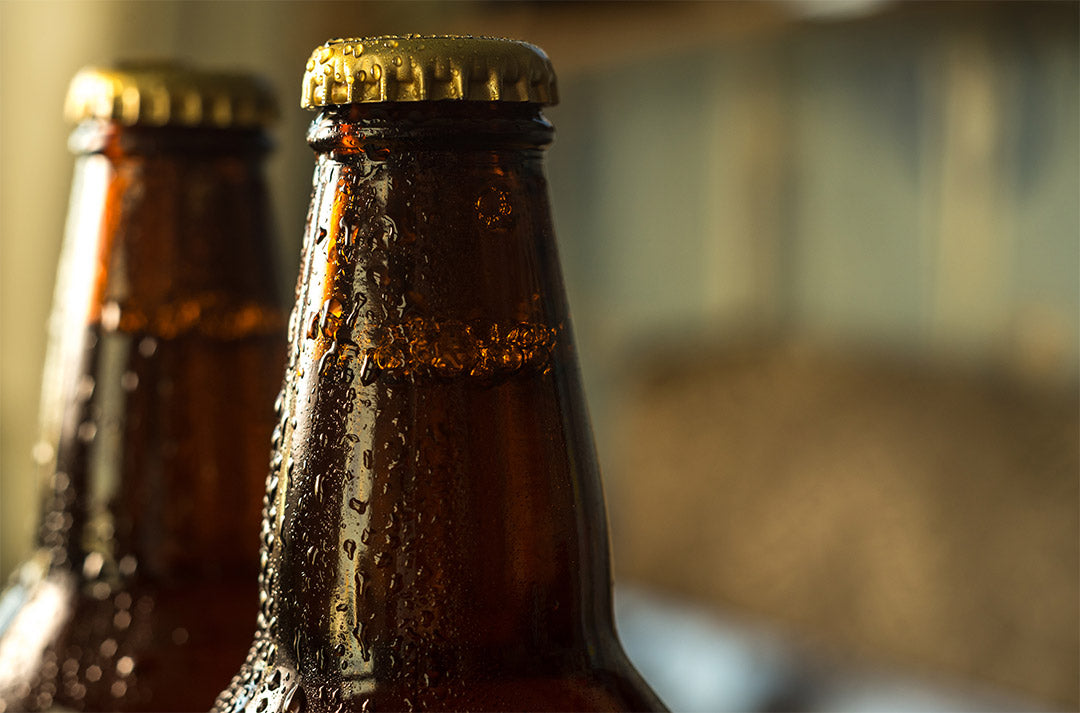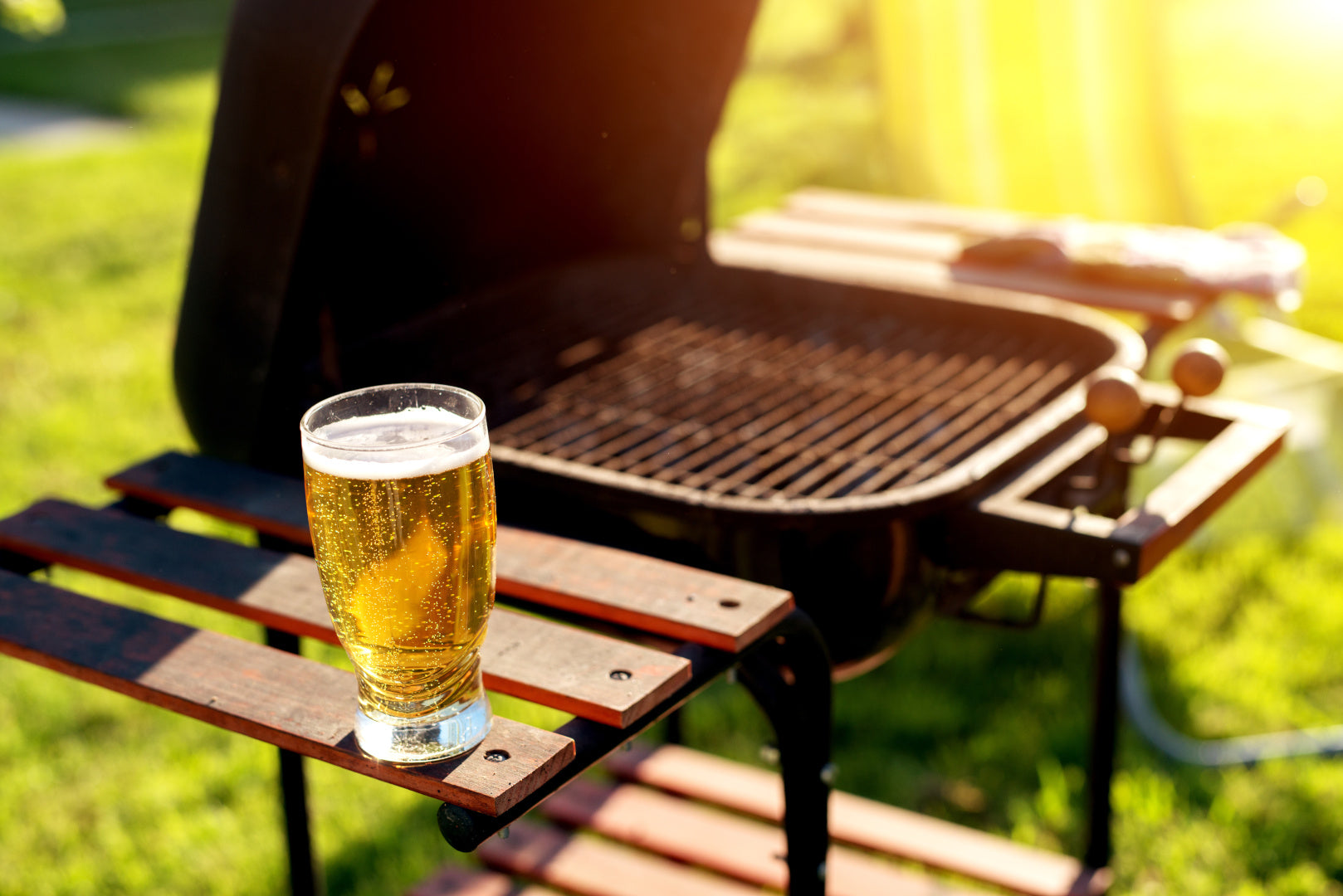
Everybody (Should) Love Lager - by Matt Curtis (Award Winning Beer Writer)
December 06, 2022
Blog Title: Everybody (Should) Love Lager

Author: Matt Curtis

Lager is universal. The world’s most consumed alcoholic beverage is brewed and enjoyed on almost every landmass across the globe. As a beer, lager is a great leveller, as acceptable to drink on a street corner in Ho Chi Minh, as it is in a Michelin-starred restaurant in Mayfair.
When I first got into craft beer, however, I dismissed it entirely. Desperately bitter and hoppy American-style IPAs gave me tunnel vision, turning me into an obsessive, evangelical drinker. At the time, breweries would refer to lager using phrases such as “fizzy yellow piss” and like many among a new generation of beer drinkers, I believed them.
That was until about 2013, when macro-brand Pilsner Urquell (then owned by SABMiller, now by Asahi) was busy launching its unpasteurized tank beer in several venues around the UK. I gladly accepted the invitation to the opening of a new venue that was serving beer from these tanks, through side-pour faucets manufactured by another Czech company called Lukr.
What these magical contraptions do is allow the server to control the flow rate of the beer. Open the handle partially and you’ll get foam—not fizzy, gassy foam, but fine, creamy “wet” foam—and when the handle is open all the way you get beer. A trained user of a Lukr can build a layer of tight froth before building your pint beneath, sealing in precious aroma and flavour, while creating an immaculate glass of beer that’s wonderfully drinkable (not unlike, say, a perfectly conditioned pint of cask ale pulled through a sparkler.)
Pilsner Urquell helped to pioneer the use of these faucets, and that’s because they truly bring out the best in this beer. Through a Lukr the sweet, yet robust feel of the malt is somehow weightier, while the elegant pepperiness of Saaz is altogether more defined and snappy. It was drinking this beer, served this way, that demonstrated how deliciously satisfying well-made lagers can be, and suddenly I was snapped out of my anti-lager evangelism.
From this point on I had to know more; I had to drink all the lagers.
A few years later, in early 2016, I was able to visit the Pilsner Urquell brewery and tour its vast facility. By now I had fully shaken the hangover of my former, misguided viewpoints about lager, and was feeling excited about learning more about the lager that helped break this cycle. Ever since I realised how wonderful lager can be, I spent as much time as I could making up for the years I discounted it, but it was on this trip I truly realised how much care and attention goes into producing this style of beer that’s loved across the globe. I also learned that where a lot of the beers that really got me into beer, IPAs and the like, were based on boldness and lavish use of ingredients, lagers were about mastering subtlety, in a style that leaves nowhere for mistakes to be hidden.
From the shining copper brewhouses, to the cellars below where they still ferment a wholly traditional, unfiltered version to use as a comparison to the modern version, to the malthouse where they malt all of their own barley, to the cooperage where they make their own oak barrels, it was magnificent. Lager is about attention to detail, and here at Pilsner Urquell, like in most lager breweries, the minute details being so precise is what makes lager such an exceptional beverage.
That trip to the Czech republic wasn’t just eye-opening because of this, however, but because I learned how subtle recipe variations can give such breadth and depth of colour and flavour. Pilsner Urquell is a classic 12º (so named due to Czech’s measuring their beers by degrees plato, rather than ABV) “Světlý Ležák”, or “light lager” when translated into English. But you can also find lighter versions of this at, say 8º, or more robust lagers at 13º, or higher still. There are also variations such as Polotmavý Ležák (amber lager), and what is one of my favourite beer styles in the world, Tmavý Ležák (dark lager). In fact the dark lager you can enjoy within the medieval surroundings at U Fleků in Prague’s Old Town is surely one of the best beer experiences going.
Although I would always say to support small, local breweries over giants like Pilsner Urquell, the important thing this trip taught me is that the more you travel, the more variation in lager styles you cover. This is because almost every nation brews its version of a lager, with some close to the German or Czech originals that inspired them.
In fact you don’t have to travel far from Prague to experience this in real-time. Whereas Czech lagers are relatively bold and robust tasting (in lager terms, anyway) move westwards over the border into Bavaria, and the lagers typically become lighter, and softer, with flavours accented towards fresh bread, with the snap of hops more herbal than peppery. (Take for example, the exquisite Tegernsee Hell.) Move westward further into Franconia and cities like Bamberg, and lagers such as those from Mahrs Bräu often have a characterful, round and subtly sweet maltiness that differentiates them from their Bavarian counterparts.
In fact once you start really exploring the many variants that lager has to offer, from amber Bock’s and Vienna lagers, to deliciously deep and roasty Schwartzbier, it’s easy to argue that the genre is easily as varied and interesting (if not more so) than the bitter, or juicy IPAs that have opened up the world of beer to so many new drinkers over the past couple of decades.
Perhaps the most exciting thing about lager is how it is being interpreted across the globe. Take, for example, New Zealand pilsners, made using hops that have descended from German and Czech varieties, but take on a grape-meets-tropical fruit character when cultivated in NZ conditions, creating a lager with vastly different characteristics than you might find in central Europe.
On a recent trip to the US, I got to visit a relatively young brewery called Cohesion, which, like me, was hugely inspired by the Czech traditions preserved by Pilsner Urquell, right down to the Lukr taps pouring the beers in its taproom. Only these beers didn’t taste quite like the beer I enjoyed in Pilsen, because Cohesion use 100% Colorado malt, grown within 60 miles of the brewery. This added its own dimension of body and flavour to the beer, ably demonstrating how place and ingredients change the language of lager, depending on where it is spoken.
It’s the same here in the UK. With more small producers than ever focusing on great lager, there’s never been a better time to start exploring it for yourself. Here’s a handful of lagers slightly off the well-worn trail that would go down a treat, even during these colder months:

Pillars have been one of London’s best kept secrets for a while now. Tucked away in Walthamstow next door to the original location of Wild Card (now their barrel room), they’ve been whipping up fantastic lagers since 2016. Their take on Vienna Lager is about as classic as it gets; dripping with soft, toffee and caramel sweet malts, while a hint of Amarillo hops adds a little orange into the mix. The finish is still dry, and biscuity, making this as refreshing as it is delicious.
Tegernseer — Dunkel Export

Perhaps better known for its Helles, which along with my personal favourite Augustiner is just about one of the best examples of the style you’ll find anywhere, Tegernseers Dunkel shouldn’t be skipped over. Combining the classic soft and subtle character of its light lagers, with hints of roasted coffee, and a faint touch of dark chocolate, this Dunkel is an ideal winter warmer if you’re still craving the thirst quenching capabilities of a lager but with something a bit different thrown into the mix.
Track — Vale English Lager

Can English hops make a good lager? Of course they can! In fact there’s never been a better time to start exploring how versatile classic English hop varieties are. Vale, from Manchester’s Track Brewing, is an exploration into how these hops manifest themselves in a classic light lager. Expect fruity and floral aromas, but the same clean and snappy refreshment as you’ve come to expect from Track’s excellent lager beers.
— Matthew Curtis





